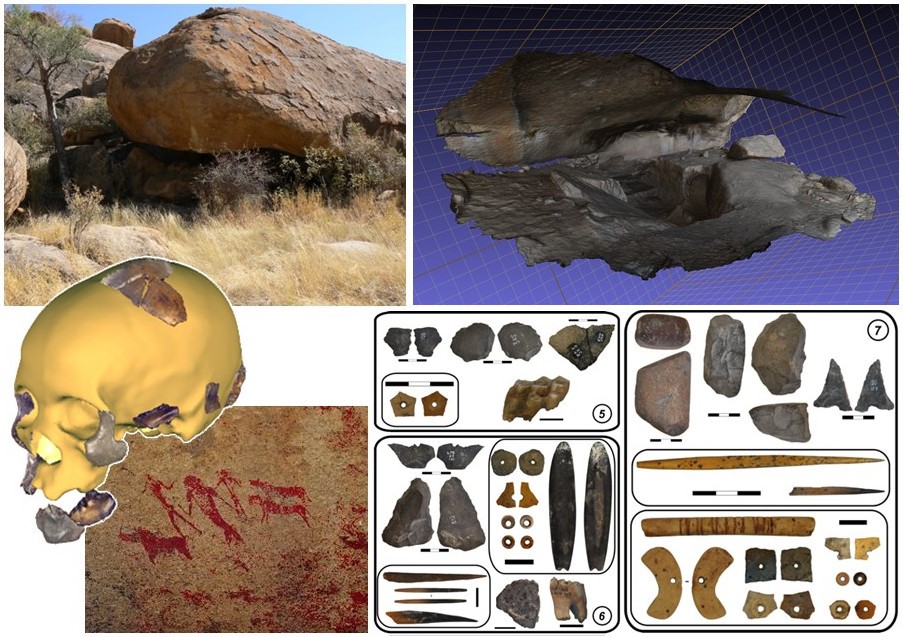|
|
|
| |
| 公告消息 |
Early Spani《The “invisible Neolithic transition”: Later Stone Age hunter-gatherers and early pastoralists in the Erongo Mountains, Namibia》sh Colonial Peru: The Case Study of Magdalena de Cao |
| 類型 |
助教室 |
| 公告內容 |
國立臺灣大學人類學系學術演講
| 講題: |
Early Spani《The “invisible Neolithic transition”: Later Stone Age hunter-gatherers and early pastoralists in the Erongo Mountains, Namibia》sh Colonial Peru: The Case Study of Magdalena de Cao |
| 講者: |
Dr. Florent Détroit(Archaeologist, Paleoanthropologist, National Museum of Natural History, Paris Research focus: Paleoanthropology, human evolutoon, bioarchaeology, Southeast Asia, Africa, morphometrics) |
| 時間: |
2018年5月22日(週二)中午12:3 |
| 地點: |
臺大水源校區人類學系館201室 |
| 簡介: |
The site of Leopard Cave (Erongo, Namibia), excavated since 2007 in the frame of a French-Namibian collaboration, yielded the earliest directly dated caprine remains known so far from southern Africa (ca. 2200-2300 cal BP; see Pleurdeau et al., 2012), although recent proteomic analyses potentially indicate a more complex situation. Additionally, the archaeological assemblages (abundant lithics, faunal remains, charcoals, and very few small potsherds) recovered from the site do not indicate the presence of a full “Neolithic package”, calling for a very cautious approach of the so-called “Neolithic transition” in this region of the world. Besides elements related to past subsistence strategies, the excavations conducted in Leopard Cave yielded very significant evidences related to symbolic behaviors. This includes several “toolkits” for pigments processing, which can tentatively be related to the figurative rockart that is still visible on the wall of the shelter and is incredibly abundant in the region. In 2012 and 2014, human remains directly dated to ca. 6500-6700 years cal BP were also discovered in front of the shelter. This small assemblage of human bones present very peculiar characteristics, among which series of breaking, cutting and burning marks. The study of those anthropogenic modifications allows to reconstruct a mortuary chaine opératoire which was previously totally unknown for the Southern African Later Stone Age. Because of the scarcity of human remains of this antiquity in Namibia – and in Southern Africa in general - and because of the singular mortuary practices they document, they are of primary interest in documenting the biological (and cultural) identity of hunter-gatherer groups present in the region during this chronological time period. |

★本演講為課堂演講,歡迎參加
|
|
|
| |
|
|
|